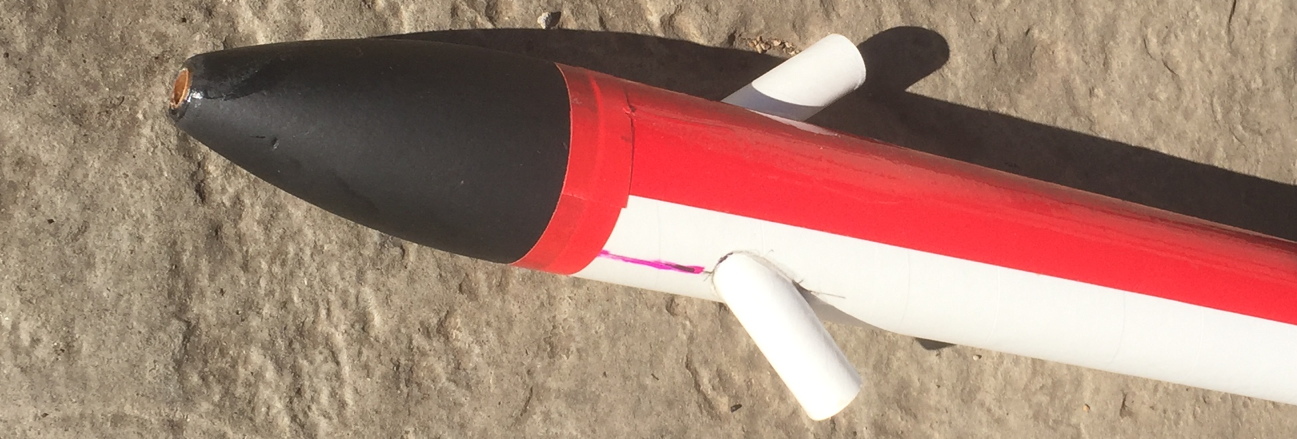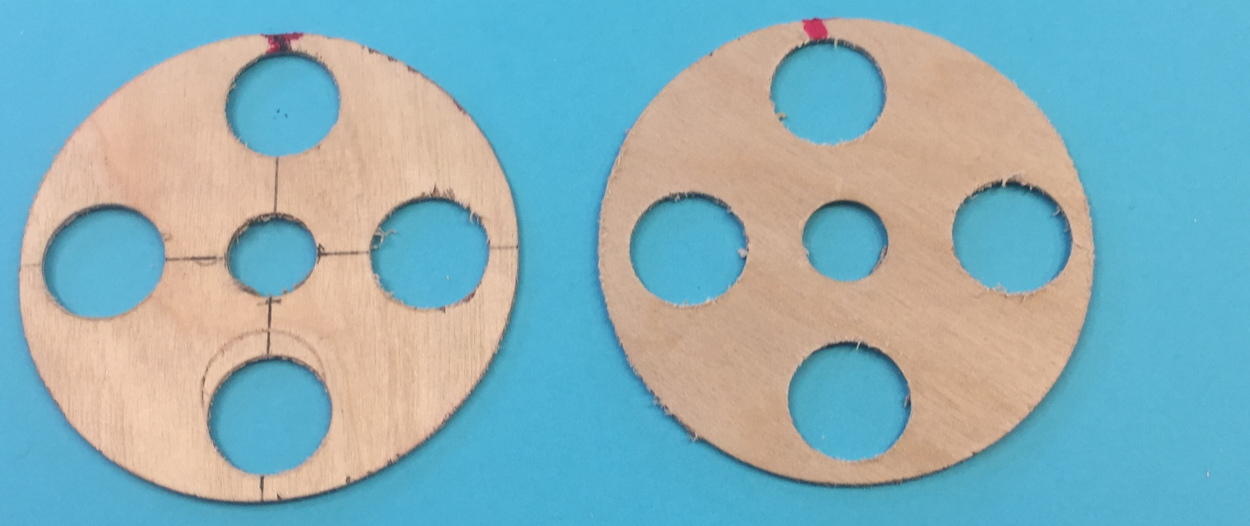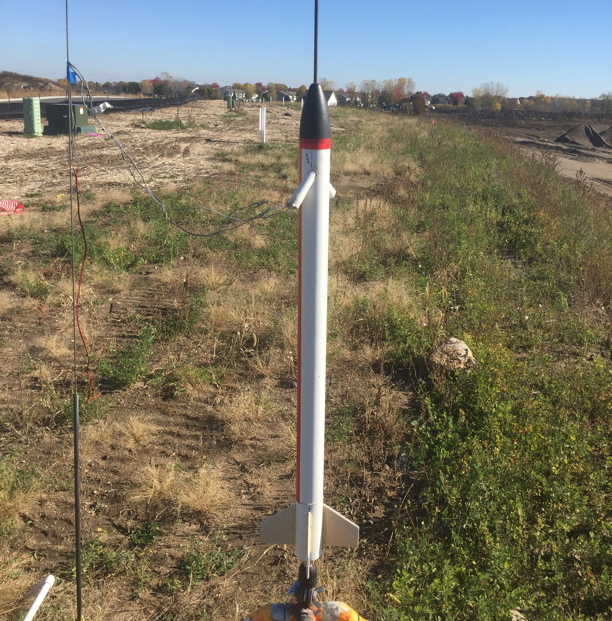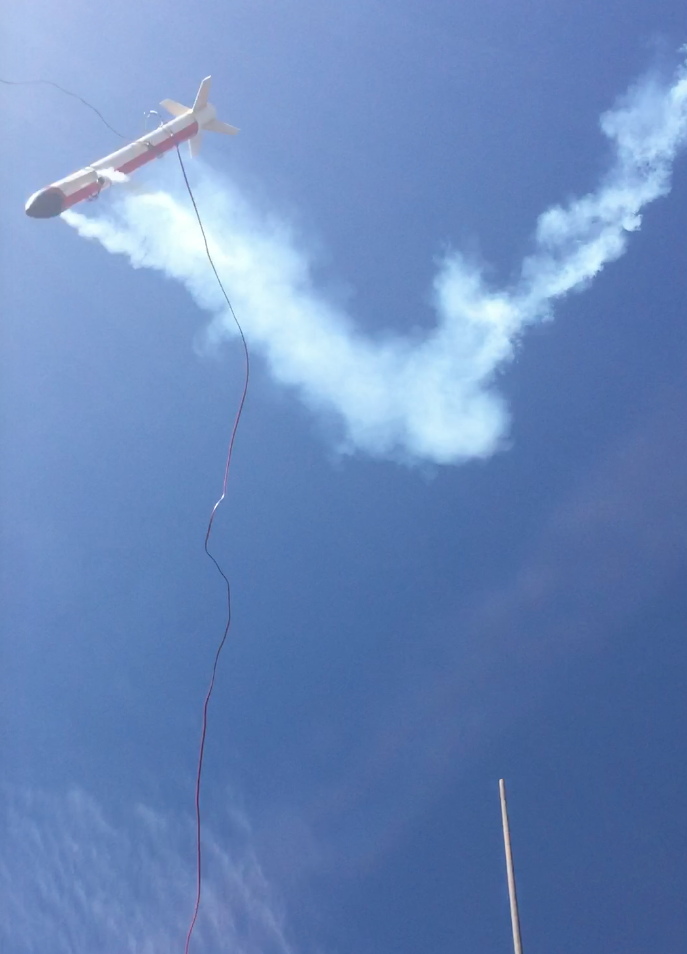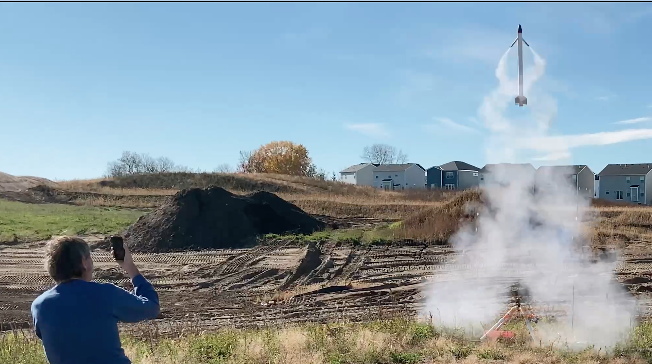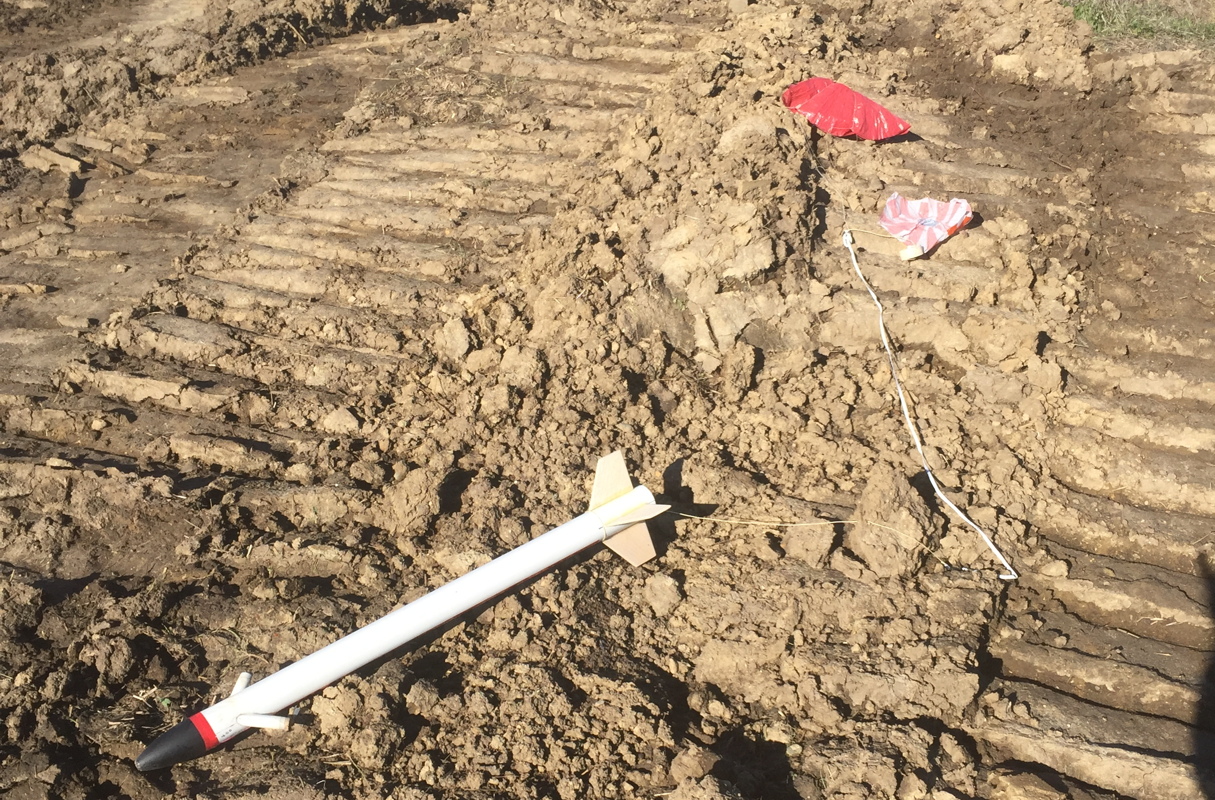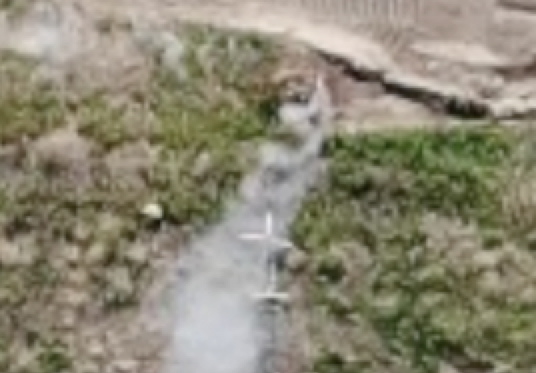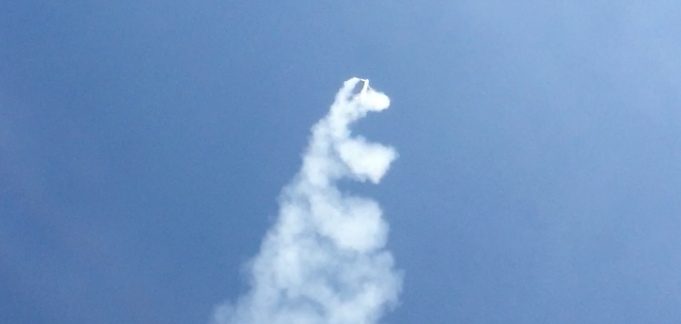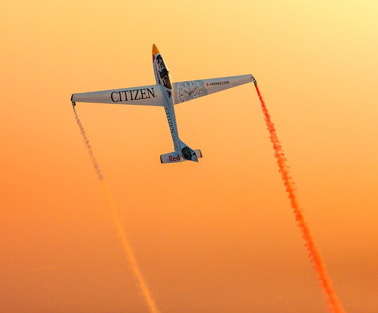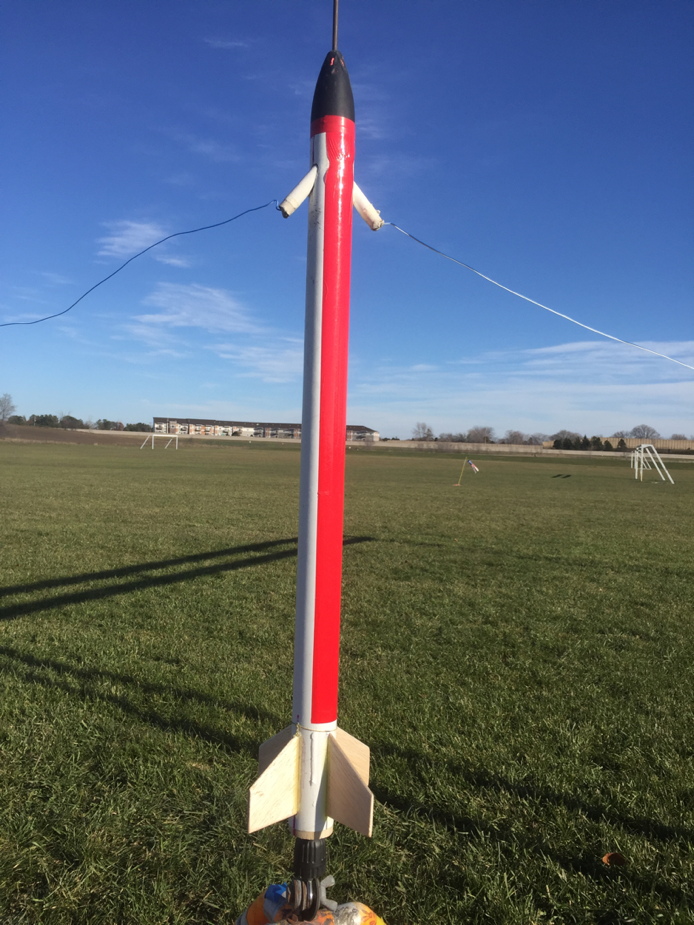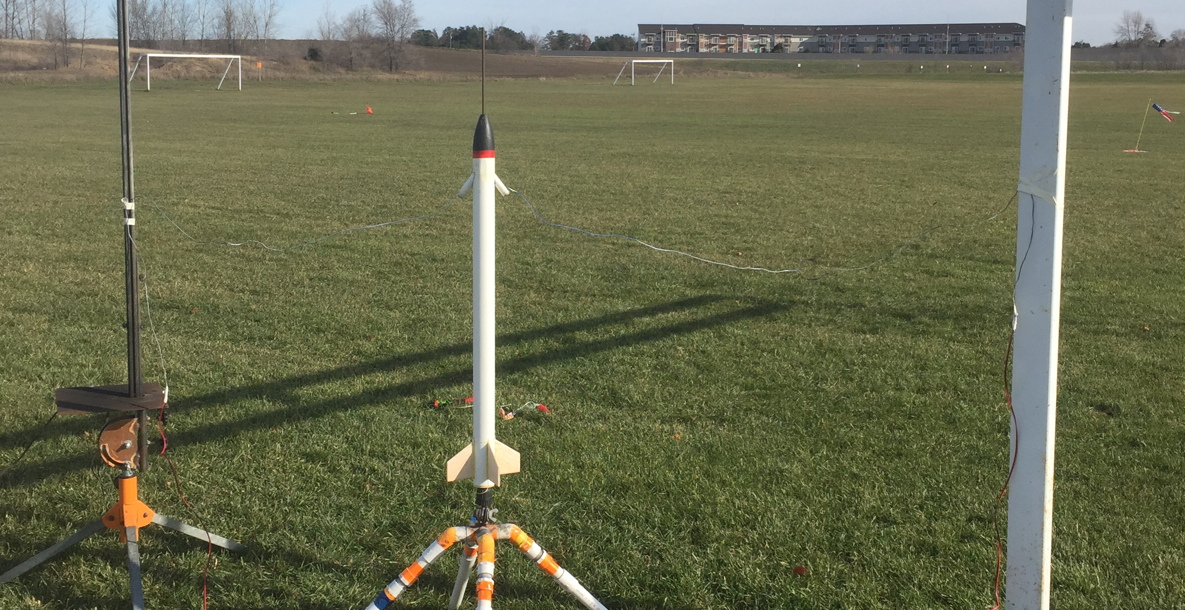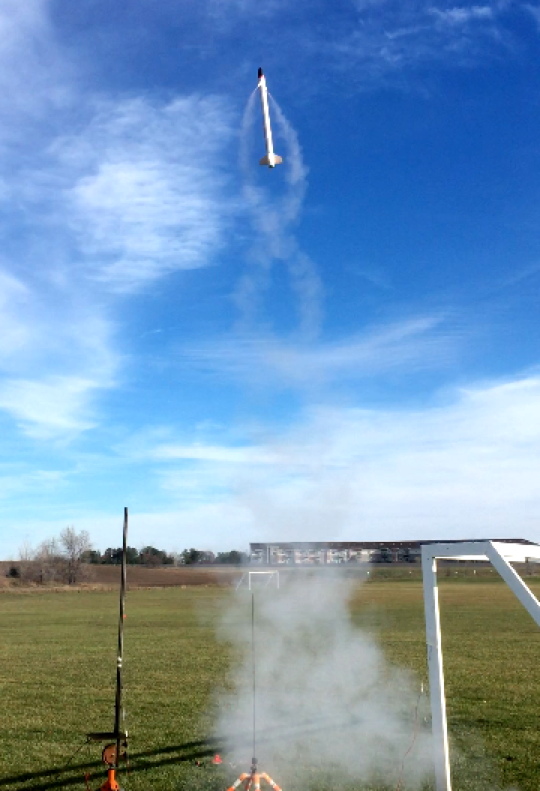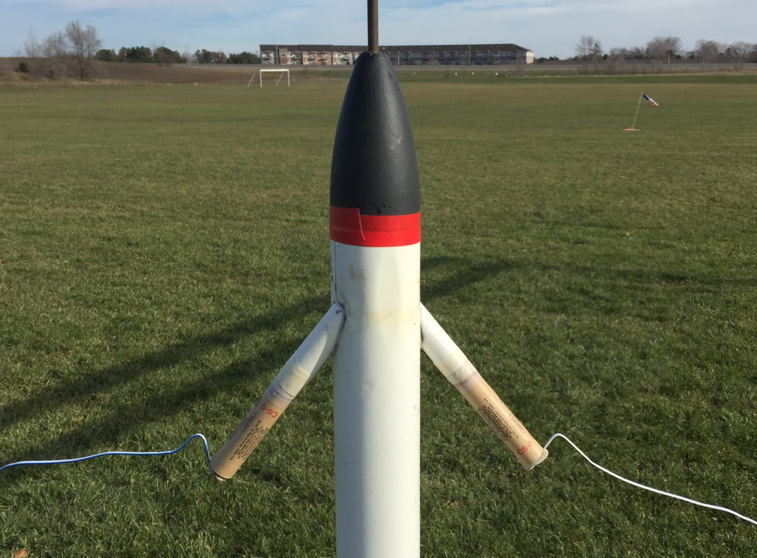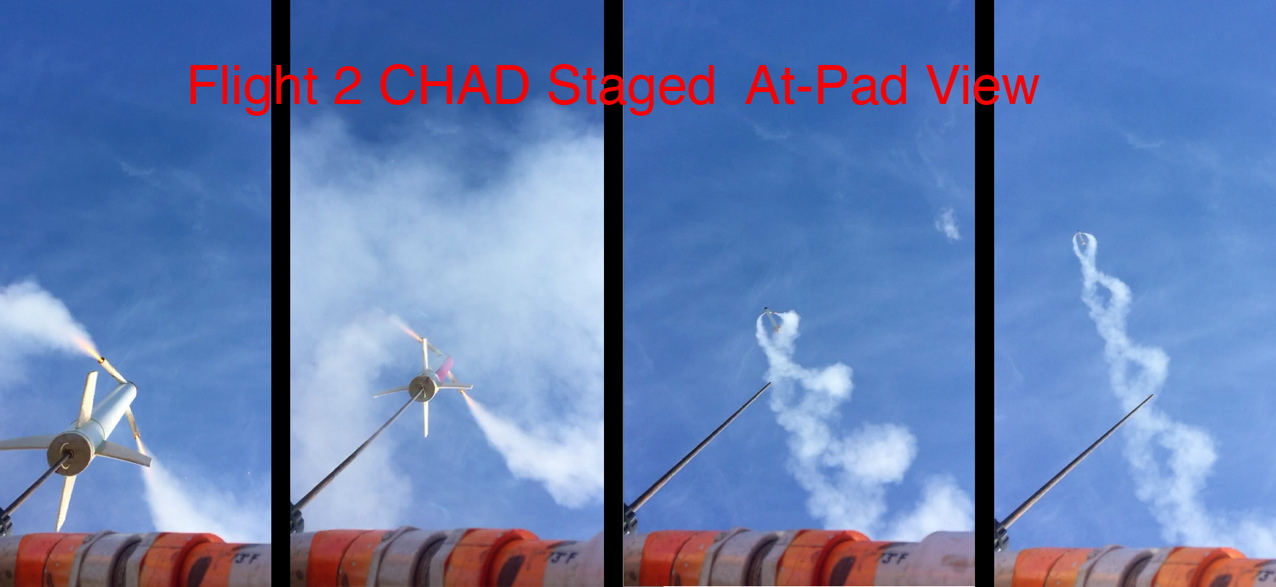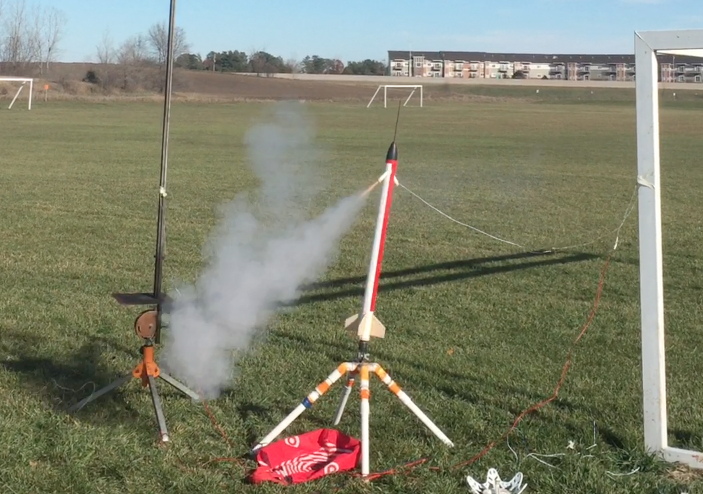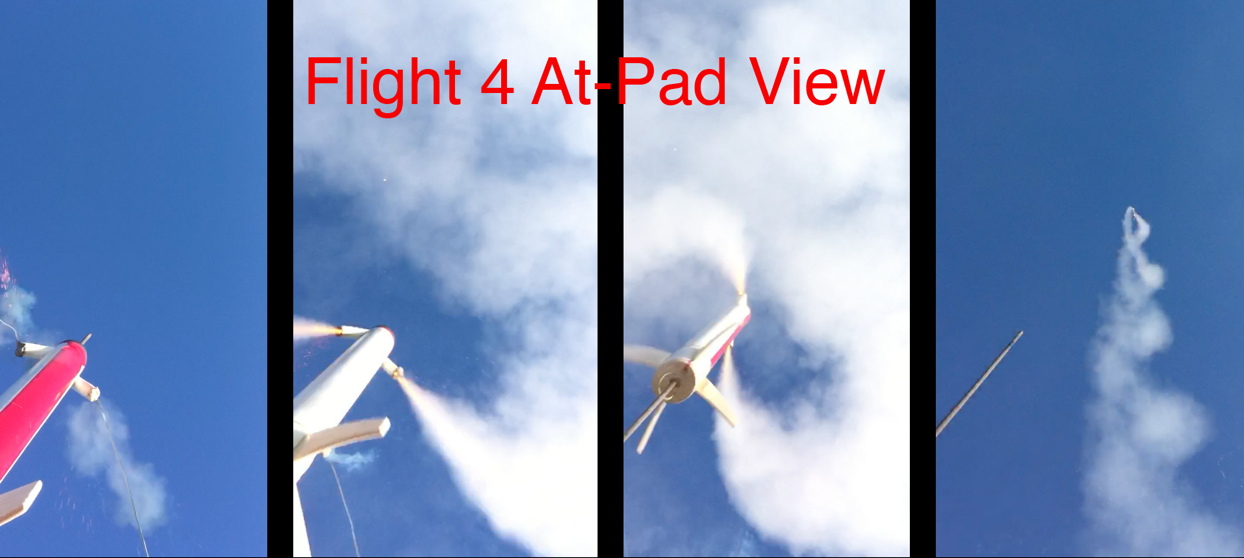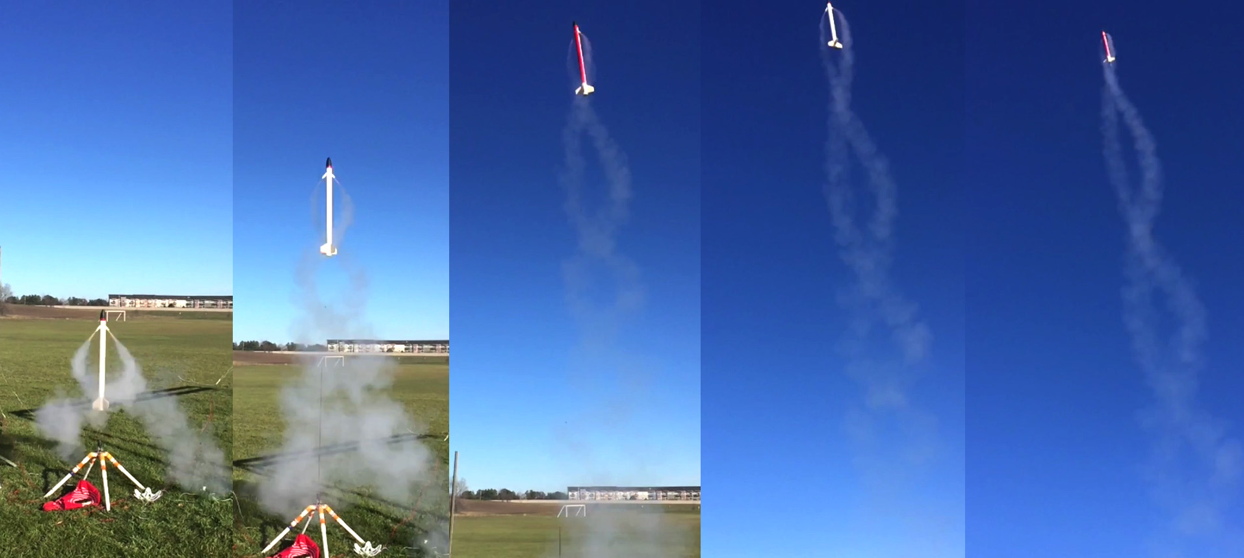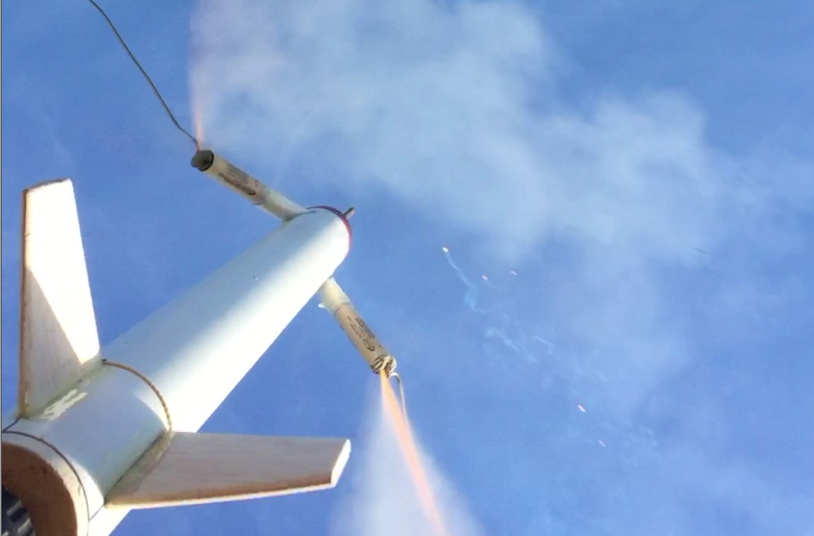- Joined
- Jan 17, 2009
- Messages
- 5,204
- Reaction score
- 1,547
I first did a “tractor” rocket around 1973. Two engines near the nose, pulling. But also, angled outwards about 30 degrees or so. Both engines ignited well, and the model screamed into the sky. Too fast, it shredded halfway into the burn. I used two D12’s, shoulda used C6’s or built a larger diameter sturdier model with stronger fins. Also a contributing factor to that model’s breakup, was that the engine pods had balsa pylons under them, to produce the cant angle. But that also acted as a canard, which I am pretty sure lead to the shred.
Below, screenshots from old super-8 film of that rocket's first and last flight. The liftoff smoke trail indicates the exhaust was canted outwards in a way that does not happen with a parallel cluster. About 1 second into the flight, one engine canard pod ripped off, the other stayed on, as seen by the "dogleg" smoke pattern when it broke up and the broken pod tumbled around still thrusting.
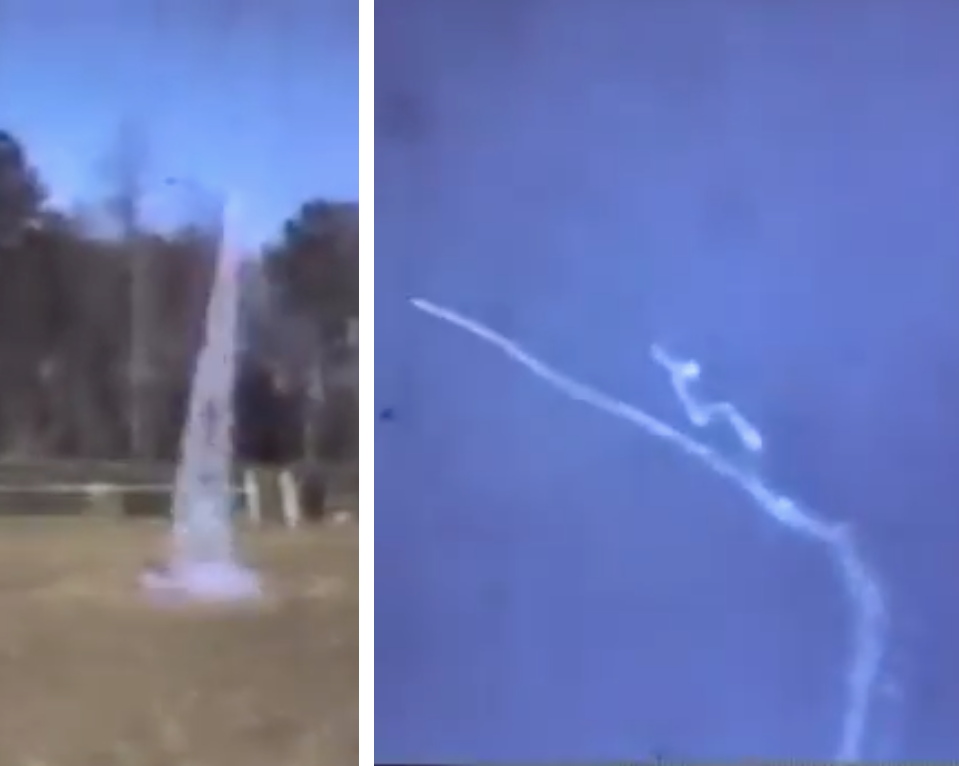
Anyway, the last couple of years I have been wanting to do another tractor rocket. But with a twist. Literally. With the engine mount tubes skewed to cause roll. I finally got around to that a bit over a week ago. This time, C6 power, sturdier structure, and no pylons to add to a canard effect, only the engine mount tubes.
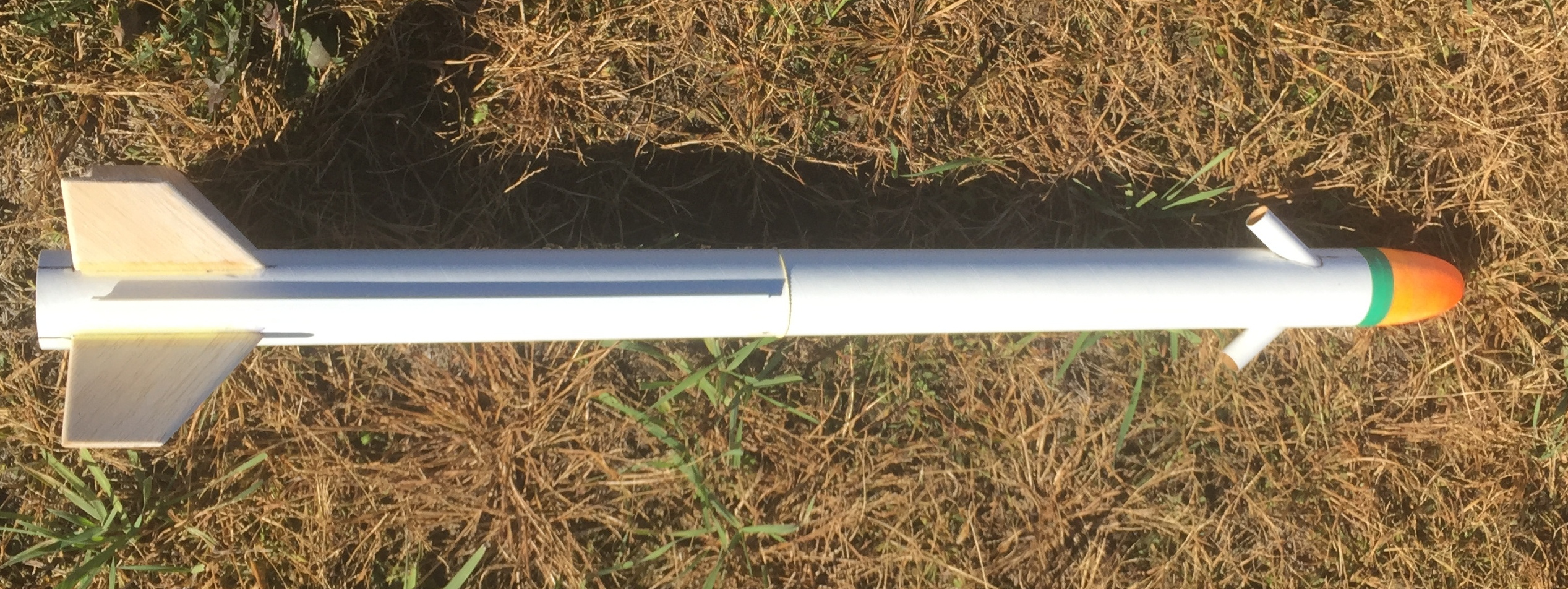
So, this rocket is 2.22” (BT-70) tubing 34” long, with two C6-3 engines up near the nose, angled outwards. And also, skewed to produce roll. During boost, it spins and makes a helical smoke trail (as well as a unique sound usually associated with an unstable rocket spinning end over end).
Below, a view of the skew angle that causes roll, and umbilical to the left.
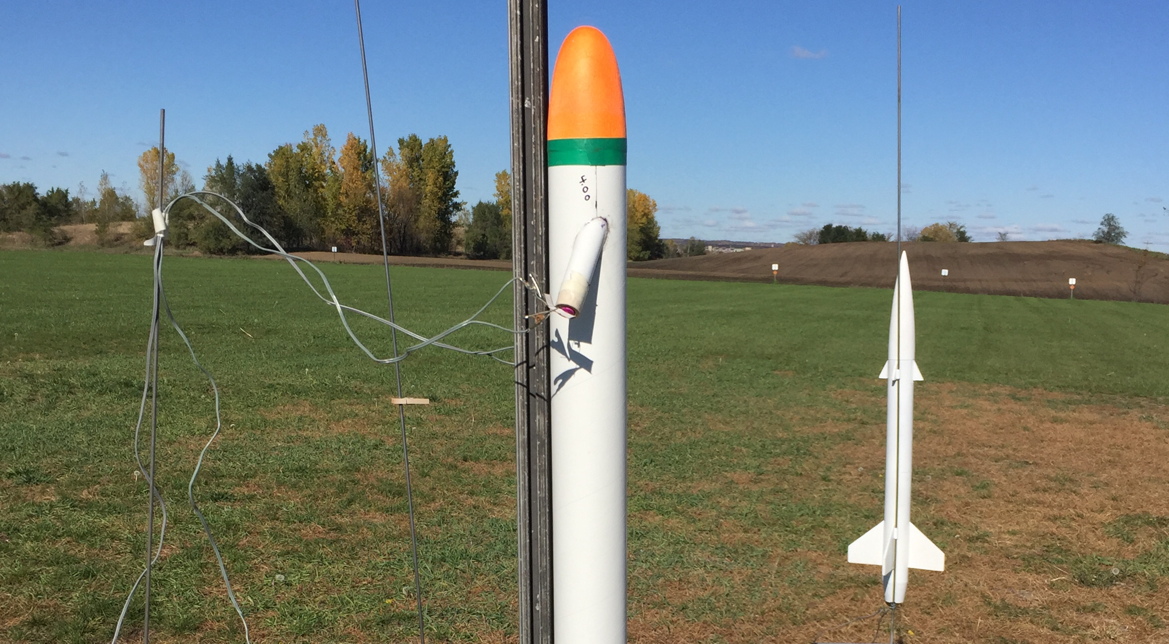
I flew it at the MASA launch a week ago (Oct 23rd), with mixed results. I used a 6 foot rail, but the “H” lug I used did not match that rail, so the roll torque at ignition caused the model to slide out of the rail with maybe 12” of guidance from the rail. It pitched over to about 45 degrees before “stabilizing”, with a nice helical roll. Fortunately the chute ejected before it hit the ground. BTW - at the time, I did not know what had happened at launch, I only found out at home later, watching the at-pad-looking-up camera that the model had slipped out of the rail. This is why I use at-pad and side-view cameras a lot).
Flight 2, I used C6-0’s with a bit of BP in front of them so they would eject the chute when they burned out, in case of an even worse boost than before. This time, the roll torque caused enough friction that the model went up the rail a few feet then stopped as the engines kept thrusting like a weird static firing. Then at burnout, the ejection kicked the tail plug and chute down hard enough to cause the rocket to go up the last few inches to fall off the rail and hit the ground.
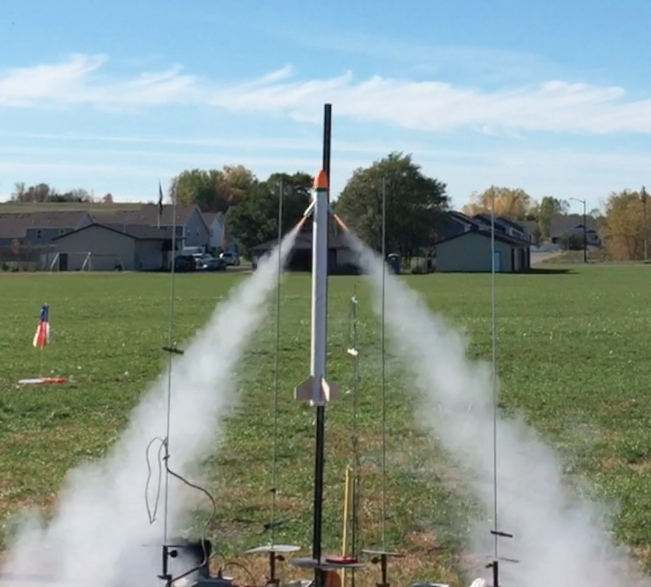
So, here is a video of those two flights. Plus my “Pumpkin Surprise” rocket.
(splitting this for a 2nd message)
Below, screenshots from old super-8 film of that rocket's first and last flight. The liftoff smoke trail indicates the exhaust was canted outwards in a way that does not happen with a parallel cluster. About 1 second into the flight, one engine canard pod ripped off, the other stayed on, as seen by the "dogleg" smoke pattern when it broke up and the broken pod tumbled around still thrusting.

Anyway, the last couple of years I have been wanting to do another tractor rocket. But with a twist. Literally. With the engine mount tubes skewed to cause roll. I finally got around to that a bit over a week ago. This time, C6 power, sturdier structure, and no pylons to add to a canard effect, only the engine mount tubes.

So, this rocket is 2.22” (BT-70) tubing 34” long, with two C6-3 engines up near the nose, angled outwards. And also, skewed to produce roll. During boost, it spins and makes a helical smoke trail (as well as a unique sound usually associated with an unstable rocket spinning end over end).
Below, a view of the skew angle that causes roll, and umbilical to the left.

I flew it at the MASA launch a week ago (Oct 23rd), with mixed results. I used a 6 foot rail, but the “H” lug I used did not match that rail, so the roll torque at ignition caused the model to slide out of the rail with maybe 12” of guidance from the rail. It pitched over to about 45 degrees before “stabilizing”, with a nice helical roll. Fortunately the chute ejected before it hit the ground. BTW - at the time, I did not know what had happened at launch, I only found out at home later, watching the at-pad-looking-up camera that the model had slipped out of the rail. This is why I use at-pad and side-view cameras a lot).
Flight 2, I used C6-0’s with a bit of BP in front of them so they would eject the chute when they burned out, in case of an even worse boost than before. This time, the roll torque caused enough friction that the model went up the rail a few feet then stopped as the engines kept thrusting like a weird static firing. Then at burnout, the ejection kicked the tail plug and chute down hard enough to cause the rocket to go up the last few inches to fall off the rail and hit the ground.

So, here is a video of those two flights. Plus my “Pumpkin Surprise” rocket.
(splitting this for a 2nd message)
Last edited:







